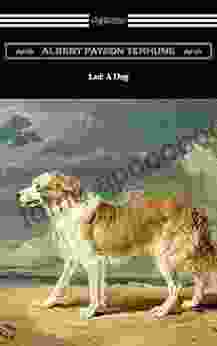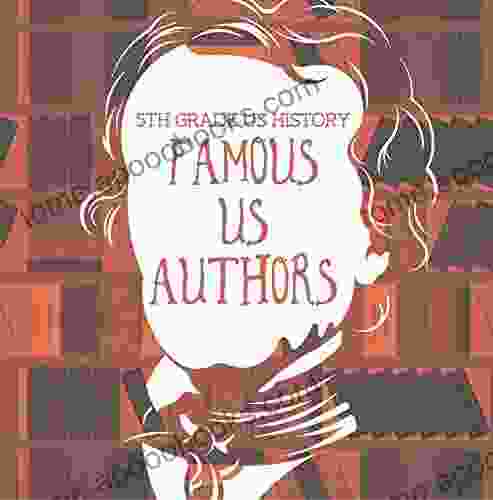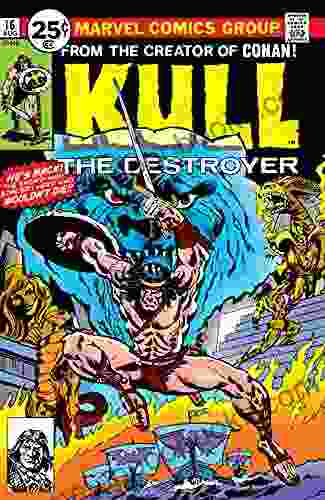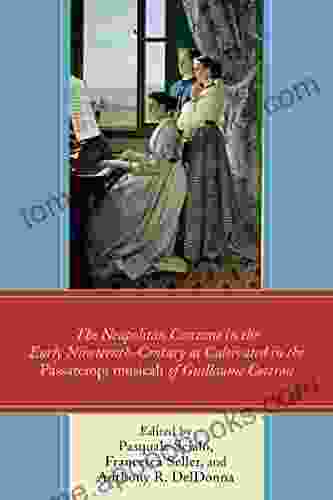The Neapolitan Canzone in the Early Nineteenth Century: A Captivating Cultural Tapestry Woven in the Heart of Italy

As the dawn of the 19th century cast its golden rays upon the cultural landscape of Europe, the vibrant city of Naples emerged as a captivating epicenter of musical innovation and refinement. Amidst the bustling streets and sun-drenched piazzas, a unique and enchanting genre of song blossomed into existence: the Neapolitan canzone.
This captivating musical form, with its intoxicating melodies and heartfelt lyrics, became an integral part of Neapolitan life, capturing the very essence of the city's vibrant spirit and enduring passion. From humble beginnings within the heart of the people, the Neapolitan canzone soared to international acclaim, leaving an indomitable mark on the global music scene.
4.3 out of 5
| Language | : | English |
| File size | : | 3213 KB |
| Text-to-Speech | : | Enabled |
| Screen Reader | : | Supported |
| Enhanced typesetting | : | Enabled |
| Print length | : | 169 pages |
The Roots of a Musical Tradition
The origins of the Neapolitan canzone can be traced back to the late 18th century, when wandering minstrels and street performers filled the air with their soulful melodies. These early songs, known as "villanelle," were often improvised and accompanied by simple instruments like tambourines and guitars.
As the 19th century dawned, the villanelle evolved into a more sophisticated form, incorporating elements of opera, popular dance, and even classical music. The Neapolitan canzone took shape as a distinct genre, characterized by its distinct melodic structure, rich harmonic progressions, and poignant lyrics.
The Golden Age of the Neapolitan Canzone
The early decades of the 19th century witnessed the golden age of the Neapolitan canzone. The city became a breeding ground for talented composers and performers, who dedicated their lives to creating and refining this captivating musical form. Among the most celebrated composers of the era were Gaetano Donizetti, Vincenzo Bellini, and Saverio Mercadante.
These maestros crafted a vast repertoire of songs that showcased the full range of human emotions, from love and joy to sorrow and longing. Their compositions were performed in lavish salons, bustling theaters, and intimate gatherings throughout Naples and beyond.
Musical Characteristics and Cultural Significance
The Neapolitan canzone is distinguished by its unique musical characteristics. Its melodies are often hauntingly beautiful, with sweeping intervals and intricate ornamentation. The harmonies are rich and expressive, often featuring unexpected modulations and chromatic progressions. The lyrics, penned by gifted poets, are characterized by their vivid imagery, poignant emotional depth, and a touch of Neapolitan wit.
Beyond its musical appeal, the Neapolitan canzone played a profound cultural role in Neapolitan society. It served as a vehicle for expressing the city's collective identity, aspirations, and struggles. The songs captured the essence of Neapolitan life, from its vibrant street culture to its deep-rooted traditions.
International Influence and Legacy
The Neapolitan canzone quickly gained popularity beyond the bFree Downloads of Naples. It was embraced by audiences throughout Italy and Europe, and soon became a staple of operatic repertoire. Composers such as Rossini, Verdi, and Puccini incorporated elements of the Neapolitan canzone into their own works, further enhancing its international influence.
The legacy of the Neapolitan canzone continues to resonate today. It has inspired countless musicians and performers around the world, and its melodies and lyrics have been translated into numerous languages. The genre remains a beloved symbol of Neapolitan culture and a testament to the enduring power of human expression through music.
The Neapolitan canzone, born in the vibrant heart of Naples in the early 19th century, stands as a testament to the city's rich cultural heritage and enduring passion for music. With its captivating melodies, heartfelt lyrics, and profound cultural significance, the Neapolitan canzone has left an indelible mark on the global music scene and continues to captivate audiences to this day.
4.3 out of 5
| Language | : | English |
| File size | : | 3213 KB |
| Text-to-Speech | : | Enabled |
| Screen Reader | : | Supported |
| Enhanced typesetting | : | Enabled |
| Print length | : | 169 pages |
Do you want to contribute by writing guest posts on this blog?
Please contact us and send us a resume of previous articles that you have written.
 Book
Book Novel
Novel Page
Page Chapter
Chapter Text
Text Story
Story Genre
Genre Reader
Reader Library
Library Paperback
Paperback E-book
E-book Magazine
Magazine Newspaper
Newspaper Paragraph
Paragraph Sentence
Sentence Bookmark
Bookmark Shelf
Shelf Glossary
Glossary Bibliography
Bibliography Foreword
Foreword Preface
Preface Synopsis
Synopsis Annotation
Annotation Footnote
Footnote Manuscript
Manuscript Scroll
Scroll Codex
Codex Tome
Tome Bestseller
Bestseller Classics
Classics Library card
Library card Narrative
Narrative Biography
Biography Autobiography
Autobiography Memoir
Memoir Reference
Reference Encyclopedia
Encyclopedia Piaras O Cionnaoith
Piaras O Cionnaoith Katherina Lepeniotis
Katherina Lepeniotis Athena Steller
Athena Steller Ian St Martin
Ian St Martin Atul Gawande
Atul Gawande Augustus Young
Augustus Young August
August Mish
Mish Robert Nalbandov
Robert Nalbandov Arthur C Clarke
Arthur C Clarke Charles Bookman
Charles Bookman Ava Strong
Ava Strong Tijan
Tijan Garry Potter
Garry Potter Eichin Chang Lim
Eichin Chang Lim Anthony Horowitz
Anthony Horowitz Avner Barnea
Avner Barnea Ember Leigh
Ember Leigh Ashley Rescot
Ashley Rescot B D Lutz
B D Lutz
Light bulbAdvertise smarter! Our strategic ad space ensures maximum exposure. Reserve your spot today!
 Herbert CoxFollow ·7.9k
Herbert CoxFollow ·7.9k Giovanni MitchellFollow ·3k
Giovanni MitchellFollow ·3k Sam CarterFollow ·6.7k
Sam CarterFollow ·6.7k Octavio PazFollow ·13.1k
Octavio PazFollow ·13.1k Charles BukowskiFollow ·12.1k
Charles BukowskiFollow ·12.1k Allen GinsbergFollow ·18.7k
Allen GinsbergFollow ·18.7k Edward BellFollow ·5.5k
Edward BellFollow ·5.5k Mario BenedettiFollow ·9.2k
Mario BenedettiFollow ·9.2k

 Gabriel Garcia Marquez
Gabriel Garcia MarquezLad Dog Baby Professor: The Perfect Book for Your Child
Lad Dog Baby...

 Fredrick Cox
Fredrick CoxAn Excerpt With Fifty Ways To Help Animals Promo Books:...
: Embracing Animal...

 Kelly Blair
Kelly Blair5th Grade US History: Famous US Authors: Fifth Grade...
Step into a captivating world of historical...

 Natsume Sōseki
Natsume SōsekiKull the Destroyer: A Timeless Tale of Sword and Sorcery
The Creation of a...

 Jim Cox
Jim CoxDas Ist Supertoll: Unlocking the Magic of German for Kids
Immersive Learning with...

 Bruce Snyder
Bruce SnyderUnlock the World of Quilting for Kids: Discover "Quick...
Are you ready to embark on a delightful...
4.3 out of 5
| Language | : | English |
| File size | : | 3213 KB |
| Text-to-Speech | : | Enabled |
| Screen Reader | : | Supported |
| Enhanced typesetting | : | Enabled |
| Print length | : | 169 pages |












